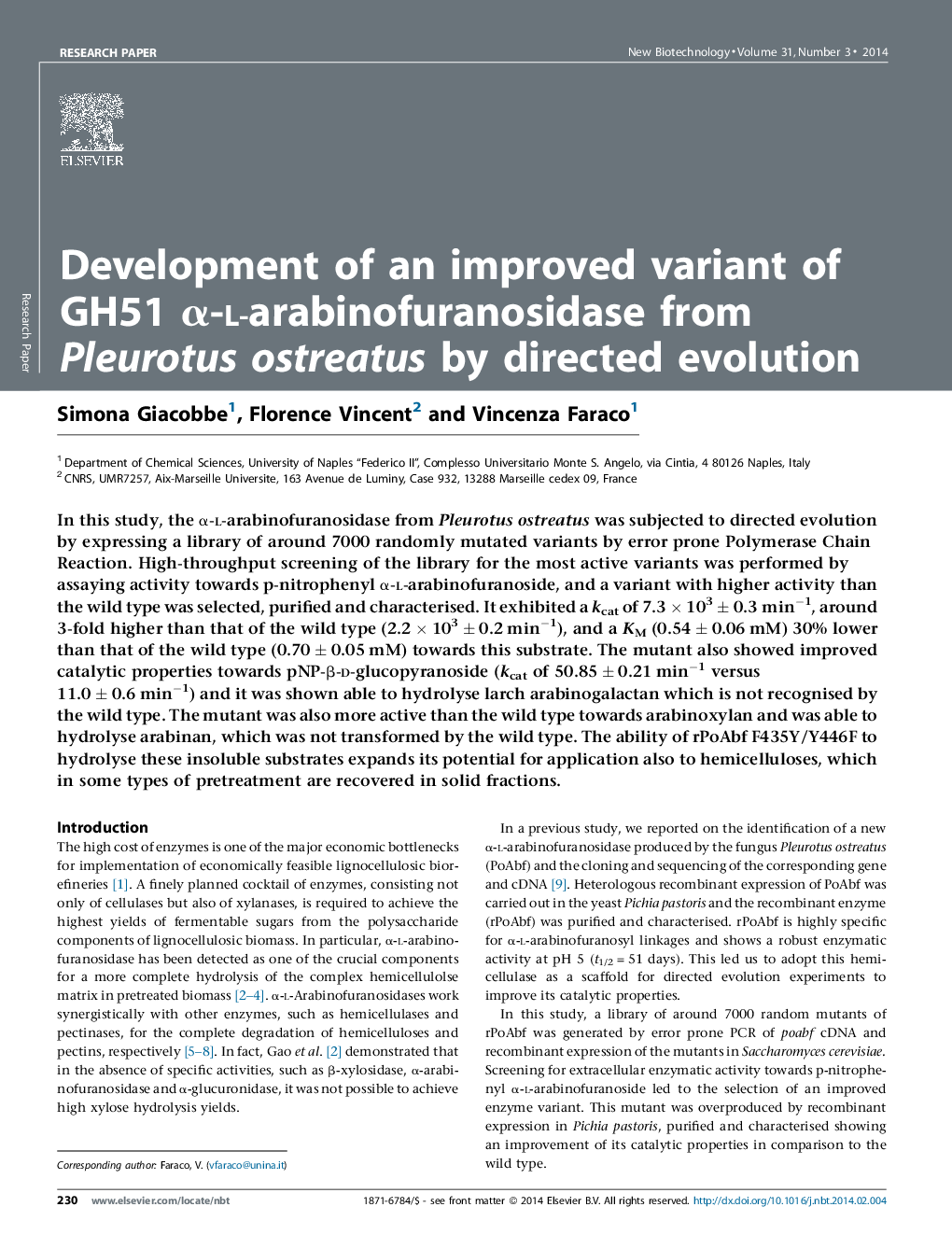| Article ID | Journal | Published Year | Pages | File Type |
|---|---|---|---|---|
| 10234974 | New Biotechnology | 2014 | 7 Pages |
Abstract
In this study, the α-l-arabinofuranosidase from Pleurotus ostreatus was subjected to directed evolution by expressing a library of around 7000 randomly mutated variants by error prone Polymerase Chain Reaction. High-throughput screening of the library for the most active variants was performed by assaying activity towards p-nitrophenyl α-l-arabinofuranoside, and a variant with higher activity than the wild type was selected, purified and characterised. It exhibited a kcat of 7.3 Ã 103 ± 0.3 minâ1, around 3-fold higher than that of the wild type (2.2 Ã 103 ± 0.2 minâ1), and a KM (0.54 ± 0.06 mM) 30% lower than that of the wild type (0.70 ± 0.05 mM) towards this substrate. The mutant also showed improved catalytic properties towards pNP-β-d-glucopyranoside (kcat of 50.85 ± 0.21 minâ1 versus 11.0 ± 0.6 minâ1) and it was shown able to hydrolyse larch arabinogalactan which is not recognised by the wild type. The mutant was also more active than the wild type towards arabinoxylan and was able to hydrolyse arabinan, which was not transformed by the wild type. The ability of rPoAbf F435Y/Y446F to hydrolyse these insoluble substrates expands its potential for application also to hemicelluloses, which in some types of pretreatment are recovered in solid fractions.
Related Topics
Physical Sciences and Engineering
Chemical Engineering
Bioengineering
Authors
Simona Giacobbe, Florence Vincent, Vincenza Faraco,
